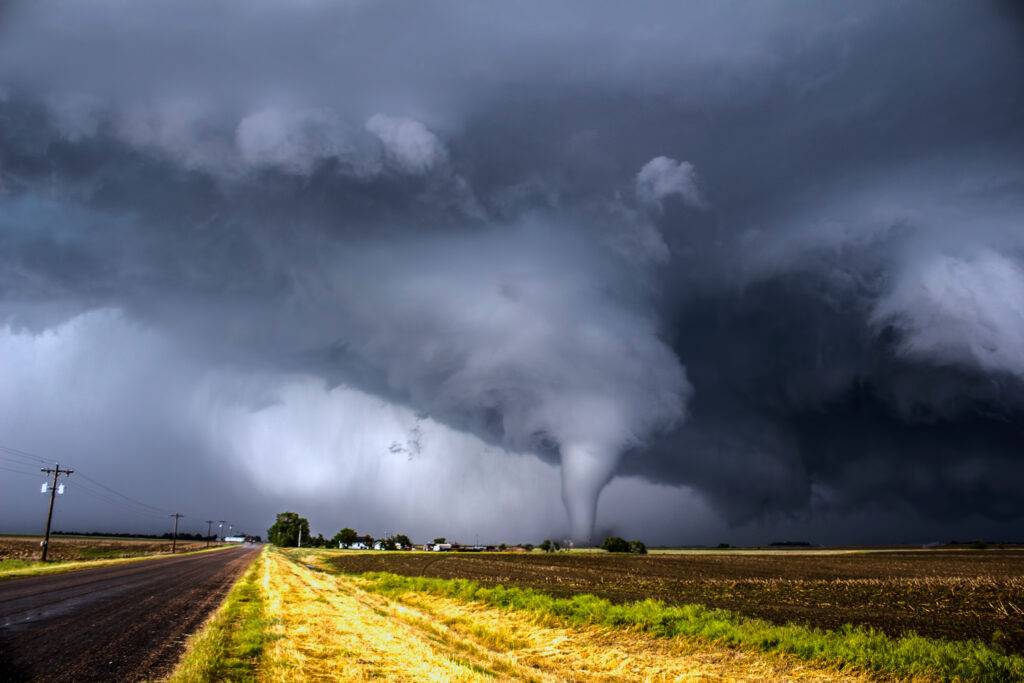Tornado Season Begins to Intensify
As winter fades and spring storms begin to develop, the annual increase in tornado activity across the United States is once again in focus. Each year, March through June marks the most active period for tornadoes, particularly in the central and southeastern parts of the country. The combination of warm, moist air from the Gulf of Mexico and cooler, drier air from the north creates the ideal conditions for severe thunderstorms and tornado outbreaks.
Why Spring Sees More Tornadoes
Spring is a transitional season when temperature contrasts are at their strongest. Warm, humid air collides with lingering cold air masses, producing unstable atmospheric conditions that fuel powerful storms. This instability, combined with changing wind patterns at different levels of the atmosphere, leads to the formation of rotating supercell thunderstorms—the primary drivers of tornadoes.
Regions Most at Risk
While “Tornado Alley” in the central U.S., including parts of Texas, Oklahoma, Kansas, and Nebraska, has long been associated with frequent tornadoes, recent trends suggest increased activity in the Southeast. States like Alabama, Mississippi, and Tennessee have experienced more tornado outbreaks in recent years, raising concerns about early-season storms impacting densely populated areas.
How This Year’s Weather Patterns Could Influence Tornadoes
Meteorologists are closely monitoring weather patterns that could impact the severity of the 2025 tornado season. Factors such as El Niño or La Niña can play a role in shifting atmospheric conditions, potentially altering tornado frequency and location. A strong jet stream, moisture levels, and early-season temperature swings will also influence the number and intensity of tornadoes this spring.
Early Signs of an Active Season
Forecasters use multiple tools to predict tornado risk, including historical patterns, long-range weather models, and real-time atmospheric data. While it is impossible to predict exactly how many tornadoes will occur, early indicators suggest that this season could bring an above-average number of severe weather events in some areas, particularly where warm air surges northward earlier than usual.
The Dangers of Nighttime Tornadoes
One of the biggest concerns in recent years has been the increase in nighttime tornadoes, particularly in the Southeast. Tornadoes that occur after dark are more difficult to see, and sleeping residents may not receive warnings in time. This makes it critical for people in tornado-prone areas to have multiple ways to receive alerts, including weather radios and smartphone notifications.
Preparing for Severe Weather
With tornado season ramping up, now is the time for communities and individuals to review their severe weather preparedness plans. Identifying a safe shelter, having an emergency kit ready, and staying informed about weather alerts are essential steps in reducing risks. Local emergency management agencies recommend practicing tornado drills and ensuring all family members know where to go in case of an emergency.
The Role of Advances in Forecasting
Meteorologists have made significant strides in tornado prediction, with improved radar technology and early warning systems providing more lead time before a storm strikes. Enhanced satellite imaging and storm-chasing efforts also contribute to a better understanding of tornado development, helping forecasters issue more accurate warnings. However, even with these advances, fast-moving tornadoes can still be difficult to track and prepare for.
Lessons from Past Tornado Seasons
Looking at previous years, patterns of destruction and impact offer valuable lessons for communities in tornado-prone regions. The deadly tornado outbreaks of past springs serve as reminders of the importance of preparedness, structural resilience, and public awareness campaigns to minimize damage and loss of life.
Looking Ahead: What to Watch For
As the 2025 tornado season unfolds, staying informed and prepared will be key to reducing risks. With severe weather expected to increase in the coming weeks, meteorologists will continue to monitor conditions and provide forecasts to help communities stay ahead of potential threats. Whether in traditional Tornado Alley or emerging high-risk areas, awareness and preparedness remain the best defenses against nature’s most violent storms.


